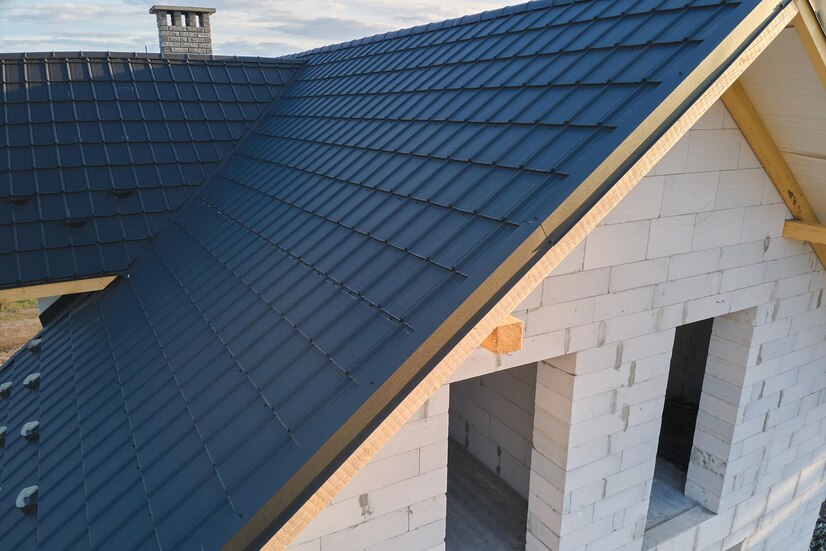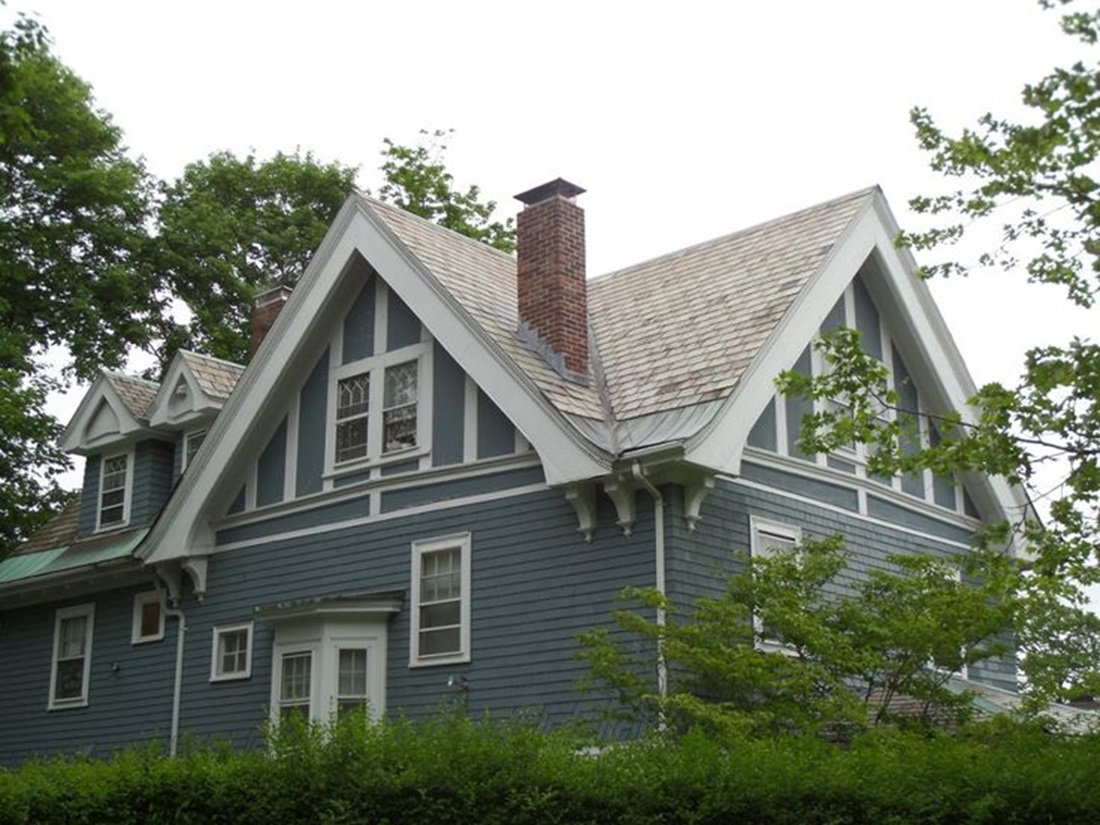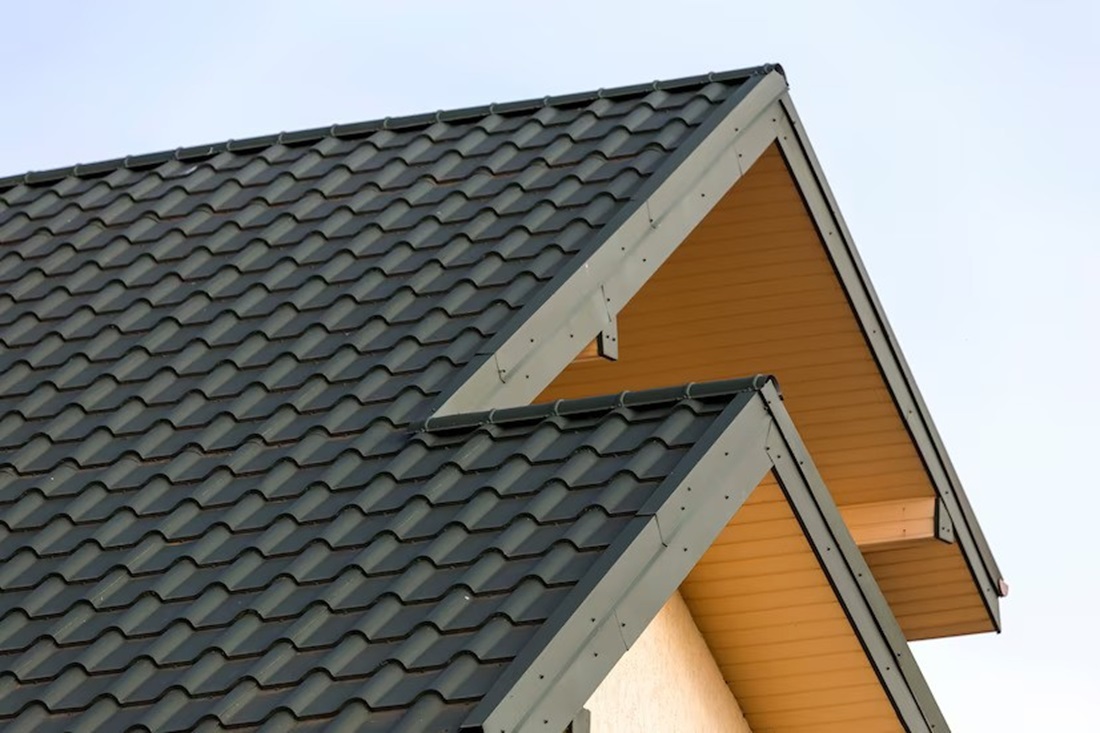A gable roof design features two sloping sides that come together at a ridge, creating an end with a triangular extension known as a gable. This structure is popular due to its simplicity and efficient water runoff capabilities.
Gable roofs, characterized by their triangular shape, are a common choice for a variety of architectural styles, ranging from classical to contemporary homes. Their peaked design not only contributes to an appealing aesthetic but also offers practical advantages such as shedding water and snow with ease, which makes them especially suitable for regions with heavy rainfall or snowfall.
The simplicity of gable roof construction often results in lower building costs and easier maintenance. Most importantly, the design provides ample space for attic or vaulted ceilings, facilitating better ventilation and the potential for additional living or storage space within the home. The adaptability of gable roofs allows for customization with different materials and enhancements like dormers or skylights, which can help improve natural lighting and increase the architectural interest of the property.

Introduction To Gable Roof Design
The silhouette of a gable roof is a common sight in many neighborhoods. This classic roof design has stood the test of time, popular for its durability and aesthetic appeal. Whether you’re building a new home or considering roof renovation, understanding gable roofs is essential. The following sections dive into everything from their structure to their place in history and comparative advantages.
Definition And Basic Structure Of Gable Roofs
A gable roof is simple. It has two sloping sides that come together at a ridge, creating end walls with a triangular extension, known as a gable. Below is a basic outline of its structure:
- Ridge: The highest point, where two roof planes meet.
- Gable: The triangular end wall from the ridge to the eaves.
- Eaves: The lower edges of the roof that overhang the home’s walls.
Historical Significance And Evolution In Architecture
Gable roofs have deep roots in history. Their simple form was easy to construct and efficient at shedding water and snow. Originating in ancient Greece, gable roofs have evolved, reflecting styles from Tudor to Colonial. Each period integrated the gable’s form and function into its architectural identity.
Pros And Cons Of Opting For A Gable Roof
| Pros | Cons |
|---|---|
|
|
Design Elements And Variations
Gable roofs shape the skyline with their timeless style. While they seem simple, their design brims with variety. Each style offers unique features and flair. Here’s how the classic gable roof evolves through different design elements and variations.
Classic Gable Roof And Its Aesthetic Appeal
The traditional gable roof, with its two sloping sides, forms a triangle. This design is more than just looks. It sheds water and snow with ease. Its innate simplicity also allows for more attic space and ventilation. This roof type lends a charming and quaint aesthetic to homes.
Cross Gable Roof For Complex Structures
A cross gable roof features two or more gable roof lines intersecting. This design creates distinct spaces for each section of a home. It is ideal for homes with complex layouts or multiple wings. Visually, it adds drama and depth to the architecture.
Dutch Gable Roof: A Blend Of Tradition And Functionality
The Dutch gable roof, a hybrid, marries the gable and hip roof designs. It has a gable set upon a hip roof for more space and style. This combination yields not just extra space but also a pleasing look with added functionality.
Front Gable Roof As A Design Statement
Often seen on Colonial-style homes, the front gable roof faces the street. This design highlights the entrance point and offers a strong, inviting presence. It’s a bold choice that makes a home stand out.

Materials And Colors To Enhance Gable Roof Design
- Asphalt shingles: Popular for their affordability and variety.
- Wood shakes: Offer a rustic charm and natural look.
- Clay tiles: Bring a tactile texture and Mediterranean flair.
- Metal roofing: Ensures durability and modern appeal.
The right materials and colors can make a gable roof shine. They add character and can reflect personal style or regional heritage. Consider the environment and building’s style when choosing.
Practical Considerations In Gable Roof Construction
Gable roofs are a popular choice due to their timeless appeal and functionality. Crafting a gable roof, however, involves careful planning to ensure longevity and performance. Let’s explore the practical considerations that play a vital role in the construction of a durable gable roof.
Structural Integrity And Load Distribution
The strength of a gable roof hinges on its ability to evenly distribute weight. Key elements to consider:
- Trusses and rafters should be engineered for your specific climate and building design.
- Support systems must bear the load of the roof and any added weight from snow or maintenance.
Weather And Environmental Factors In Design
Gable roofs must withstand environmental pressures. Important design features include:
- Slope angle can affect how snow and water shed off the roof.
- Materials used should resist local weather patterns, be it heavy rain, wind, or extreme temperatures.
Insulation And Ventilation Solutions For Gable Roofs
Proper insulation and ventilation are crucial for energy efficiency and preventing moisture-related issues. Consider:
- High-quality insulation to reduce heat loss or gain.
- Ventilation spaces to manage temperature and humidity in the attic.
Maintenance Tips To Prolong The Lifespan
Regular maintenance extends a gable roof’s life. Essential upkeep includes:
- Cleaning gutters to prevent water damage.
- Inspecting for damage or wear, especially after severe weather.
- Reinforcing sealants and replacing shingles when necessary.
Navigating Building Codes And Regulations
Compliance with local codes is a non-negotiable aspect of roof construction. It ensures:
- Safety standards are met.
- Legal requirements are followed.
- Smooth permit processes for future renovations.
Integrating Gable Roofs Into Modern Home Design
Gable roofs have stood the test of time, evolving to blend seamlessly with modern home design. While honoring tradition, gable roofs transition into contemporary settings, merging classic charm with modern aesthetics. The versatility of gable roofs makes them a coveted choice for new builds and renovations alike.
Combining Aesthetics With Energy Efficiency
Modern gable roofs are not just about looks; they focus on energy efficiency as well. The sloping sides contribute to reduced heat loss and promote proper ventilation, slashing energy bills. High-quality insulation materials, coupled with smart design, offer a perfect balance between style and sustainability.
Leveraging Natural Light With Gable Roof Windows
Strategically placed windows in gable roofs flood interiors with natural light, creating bright and inviting spaces. These windows also offer picturesque views and aid in passive solar heating, saving on electricity costs during colder months.

Incorporating Contemporary Materials And Technology
Today’s gable roofs embrace innovative materials and technology. From solar shingles to green roofing systems, these materials ensure homes are cutting-edge and built to last. Smart home technology integration allows for automated climate control, further enhancing living spaces.
Case Studies: Inspiring Gable Roof Homes
- Solar-Powered Splendor: A home equipped with a gable roof featuring solar panels, maximizing energy production.
- Eco-Friendly Elegance: A residence with a green gable roof, blending beautifully with its natural surroundings.
- Urban Oasis: A city dwelling that uses its gable design to create an airy, light-filled sanctuary.
Future Trends In Gable Roof Architecture
Gable roofs are witnessing a resurgence with twists that signal future trends. Think multifunctional spaces beneath steep slopes, integrated technology for smart homes, and environmentally friendly materials. These advancements point to an exciting future for gable roof architecture that’s both beautiful and brainy.
Frequently Asked Questions For Gable Roof Design
What Is A Gable Roof Design?
A gable roof design features two sloping sides that come together at a ridge, creating a triangular shape on the ends. This classic style is popular for its simplicity and effective water drainage.
What Are The Disadvantages Of A Gable Roof?
Gable roofs can struggle with proper ventilation, have limited attic space, and can be susceptible to damage from high winds. Their simplistic design also offers limited architectural interest.
What Is A Hip Roof Vs Gable Roof?
A hip roof has slopes on all four sides, forming a ridge at the top, while a gable roof has two sloping sides that meet at a peak, creating a triangular end.
What Is A Dutch Gable Roof Design?
A Dutch gable roof combines a traditional gable roof with a hip roof, featuring a gable, or triangular section, atop a hipped lower portion for added space and aesthetic appeal.
Conclusion
Selecting the right gable roof design can elevate your home’s aesthetic and functional appeal. By considering factors like materials, pitch, and style, homeowners can ensure durability and enhance curb appeal. With its timeless charm and practical benefits, a well-chosen gable roof remains a top choice for residential structures.
Embrace the classic look and embrace your home’s full potential.




